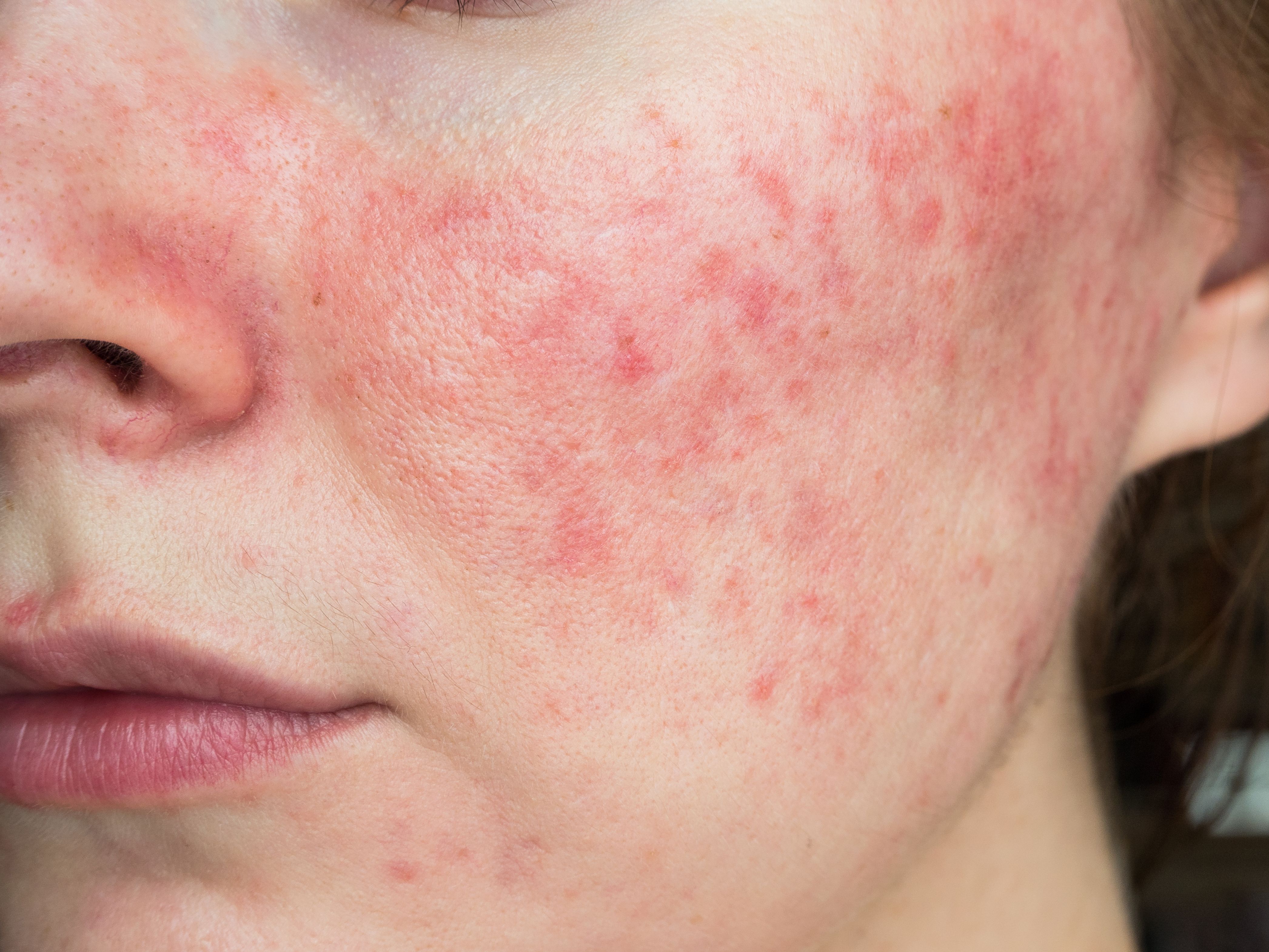- Case-Based Roundtable
- General Dermatology
- Eczema
- Chronic Hand Eczema
- Alopecia
- Aesthetics
- Vitiligo
- COVID-19
- Actinic Keratosis
- Precision Medicine and Biologics
- Rare Disease
- Wound Care
- Rosacea
- Psoriasis
- Psoriatic Arthritis
- Atopic Dermatitis
- Melasma
- NP and PA
- Skin Cancer
- Hidradenitis Suppurativa
- Drug Watch
- Pigmentary Disorders
- Acne
- Pediatric Dermatology
- Practice Management
- Prurigo Nodularis
- Buy-and-Bill
Article
Education key to optimizing care of rosacea patients
Author(s):
Designating April as Rosacea Awareness Month, the National Rosacea Society aims to increase public understanding of the condition and lead individuals who may be a ffected to seek medical help before their condition becomes worse.
Dr. Harper

Designating April as Rosacea Awareness Month, the National Rosacea Society aims to increase public understanding of the condition and lead individuals who may be affected to seek medical help before their condition becomes worse. Delivering optimal management for each patient will require undertaking a comprehensive assessment to identify all of the individual’s rosacea-related signs and symptoms and then building a therapeutic regimen that addresses the full spectrum of clinical manifestations, according to Julie C. Harper, M.D.
RELATED: Novel topical foam promising for papulopustular rosacea
“We are looking at rosacea patients differently today than in the past when the tendency was to pigeonhole people into subtypes of erythematotelangiectatic, papulopustular, ocular or phymatous disease and then choose treatment based on the subtype,” said Dr. Harper, The Dermatology and Skin Care Center of Birmingham and immediate past President of the American Acne and Rosacea Society.
“The problem with this approach is that patients often present with a variety of rosacea features that fall across multiple subtypes and any individual therapy is generally most effective for addressing the manifestations of a particular rosacea feature.”
For example, topical ivermerctin, oral doxycycline and topical metronidazole are all useful for treating papules and pustules while the topical alpha-adrenergic agonists, oxymetazoline and brimonidine are indicated for treating persistent facial erythema. Lasers and other light-based devices have a role for clearing telangiectasias, and surgery with electrocautery or more aggressive lasers is needed for phymatous changes.
“Although a patient may present with dominant inflammatory lesions, that individual is also likely to have persistent facial erythema, telangiectasias and may even have ocular disease,” Dr. Harper says. “Therefore, the patient will be best served by combination treatment.”
To further illlustrate the need for using a multimodal therapeutic strategy, Dr. Harper used the following analogy. “Imagine going out for a nice dinner that begins with soup, followed by salad, an entrée and dessert. If the waiter presents you with eating utensils and says you can only pick one, it would be very difficult for you to eat all of the courses in the meal,” Dr. Harper says. “Just as you need to have a knife, a fork, and a spoon to effectively consume the entire dinner, we need to be using all of the tools we have at our disposal if we are going to treat rosacea most effectively. That means using good combination therapy.”
RELATED: Topical rosacea cream creates new treatment paradigm
EMERGING ADVANCES
New treatments for rosacea are on the horizon with two products having completed phase 3 studies with positive results. They include a topical minocycline product containing 1.5% of the active ingredient in a foam formulation (FMX103) and a cream formulation of microencapsulated benzoyl peroxide 5%. The New Drug Application (NDA) for the minocycline foam is under FDA review and the company developing the benzoyl peroxide product is expected to submit the NDA in the first half of 2020. Both products are targeting approval for treatment of papulopustular rosacea.
Dr. Harper notes that although these two products would not bring an advantage for addressing a broader number of rosacea-related features compared with existing treatments, they will be welcome additions because they will give clinicians a greater number of options, Dr. Harper says.
“We now have several very good products for treating rosacea, but unlike in acne, our choices do not go very deep. When a patient’s rosacea does not respond adequately after trying a first and second-line, we may be left with no alternative,” she explains.
“With more therapeutic choices we have more opportunity to help more patients, and that is exciting.”
PATIENT EDUCATION
Considering that rosacea is a chronic and recurrent disease that can be affected by a variety of exogenous triggers, it is especially important that patients become partners in their care. Achieving their participation requires that they understand the nature of their disease along with the role of lifestyle interventions, medications, and proper skin care in its management.
RELATED: Combination therapy significantly improves rosacea symptoms
The National Rosacea Society is a rich source for patient education materials that address these issues with accurate and reliable information, said Dr. Harper.
The resources include the Recognizing Redness booklet that was released in 2019. It helps patients identify facial redness related to rosacea, distinguish between baseline redness and a flare-up of their disease, and gauge objectively the effects of treatment being used to control redness.
Other materials include the Coping with Rosacea brochure that discusses trigger avoidance and the psychosocial sequelae of rosacea along with other topics, the Rosacea Diary booklet for helping patients to recognize and avoid factors that trigger flares, and the Managing Rosacea brochure that delves into treatment options, lifestyle management, and tips for personal care.
Patients can also be directed to the National Rosacea Society website (rosacea.org) where they can access a wealth of information and download a PDF version of all of those educational materials along with the Understanding Rosacea brochure that provides a broad overview the disease, its signs, causes, triggers and treatment.
Disclosures:
Dr. Harper is a consultant and/or has done contracted research for companies that market or are developing products for the treatment of rosacea.






